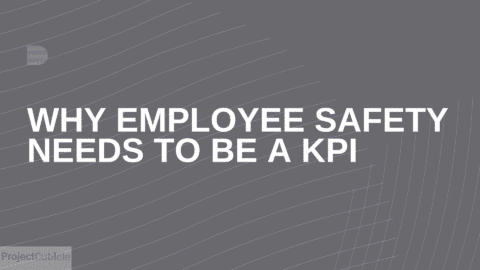The Crucial Role Of Employee Engagement In Today’s Workforce
Navigating the complexities of employee satisfaction and productivity is like steering a ship through dynamic waters in this ever-evolving landscape of the modern workplace. In these challenging times, employee engagement emerges as a critical factor for business leaders who strive to ensure the organization remains buoyant and forward-moving.
Table of Contents
Simply put, employee engagement reflects a worker’s emotional commitment to the organization and its goals. However, it’s not just about happiness or satisfaction, though these are important elements, but more about being psychologically invested in and motivated by the work one does, resulting in a willingness to go the extra mile for the company’s success. And as employees start to consider other factors beyond the paycheck and instead seek purpose, development, and connection in their roles, businesses can no longer afford to ignore the importance of employee engagement and its financial implications.
Benefits Of Employee Engagement
A key aspect influenced by engagement is productivity, with engaged employees delivering higher quality work with enhanced efficiency. This improves the team performance and the organization’s overall success because a productive environment reduces turnover as well, thus saving both time and financial resources for the company.
Conversely, a lack of energy and interest could result in the worker’s inability to accomplish tasks promptly or just doing enough to get by instead of striving for excellence or innovation. Disengagement can also lead to an uninspiring work environment, as apathy and disinterest among a few employees might affect their colleagues, causing an overall dip in productivity and an increase in turnover rate for the entire team.
For example, in the US, surveys indicate that employees have been feeling more distant from their employers, with only 33% expressing feelings of active involvement and commitment to their work and workplace. This number is significantly lower compared to 2020, which showed an engagement rate of 36% – with each tiny 1% change in engagement affecting approximately 1.6 million US workers, reflecting about $1.9 trillion in productivity losses nationwide.
Lastly, beyond these tangible benefits, engaged employees usually report better health, are more resilient, and take fewer days off due to illness, ensuring a robust and ready workforce. They also typically spur innovation, as these staff members are more likely to be problem-solvers, consistently coming up with creative solutions and ideas.
How To Cultivate Employee Engagement
Engagement doesn’t happen by accident and takes deliberate effort and investment from the organization in order to develop. If you want to have engaged employees in your company, take a look at these foundational pillars of engagement to get you started:
1. Clear And Open Communication for Employee Engagement

Clear communication means that employees are well-informed about the company’s goals, their respective roles, and how their efforts contribute to the larger picture. This understanding helps them align their personal and professional objectives with the company’s mission, fostering a sense of purpose in their work and employee engagement.
Meanwhile, open dialogue allows for feedback in both directions, promoting trust and respect in the workplace, which can significantly heighten the employees’ level of commitment and job satisfaction. On one hand, it gives employees the opportunity to voice their ideas and concerns without fear of negative repercussions, making them feel empowered and take ownership of their work. On the other hand, they can receive constructive and timely feedback about their performance, guiding them toward growth and improvement.
2. Recognition and Reward
A culture of recognition encourages employees to go above and beyond, bring innovative solutions to the table, and take ownership of their work. This is because positive reinforcement boosts their self-esteem and morale and fosters a sense of belonging and loyalty to the company.
As employees strive to achieve goals and be recognized for their achievements, a healthy and competitive environment within the workplace can also develop, leading to a stronger sense of camaraderie and cooperation among the staff. Lastly, rewards also serve as tangible expressions of gratitude, demonstrating the organization’s appreciation of employees’ contributions through incentives like raises, bonuses, awards, or other meaningful perks.
3. Growth Opportunities
Providing growth opportunities to employees fosters a sense of belonging, drives motivation, and inspires commitment to personal and professional development. It affirms that the organization is genuinely invested in the employees’ growth, which they will reciprocate by contributing their skills and creativity to the company’s success.
Moreover, growth opportunities encourage an enriching and fulfilling environment characterized by continuous learning and self-improvement, leading to heightened job satisfaction. Witnessing potential avenues for growth can also inspire and motivate employees to work diligently to achieve those milestones, fueling their passion and resulting in higher engagement at work.
4. Leadership

The actions and behaviors of leaders at every level set the tone for engagement, which is why employers seeking to cultivate a dedicated and dynamic workforce should invest more in the training, development, and overall support of their managerial teams. After all, the passion and commitment of leaders are contagious and are critical to the success of your employee engagement program.
Start with training programs that equip your leaders with the tools they need to inspire and engage their teams. Effective communication skills are also paramount for managers, with recent reports showing that the manner and frequency at which managers communicate with their employees play a significant role in fostering their trust and dedication to the organization.
The Future Of Work Is Engaged
As a business leader, your commitment to fostering a workplace where engagement thrives can transform the very essence of your organization, creating ripples that extend to every aspect of business performance. This is because the future of work hinges on an engaged workforce, and as such, employee engagement is no longer just a “nice to have” but a “must-have. When you help employees find meaning in their work, your teams will innovate and outperform, and your organization will flourish.
But the path to enhancing engagement is not without its challenges, which include disengaged managers, lack of resources, and measuring impact. Firstly, engaged employees need engaged leaders, so you must ensure that managers recognize the importance of their role in promoting engagement and provide them with strategies to encourage it.
Constraints on time and money can hinder engagement efforts as well, but you can foster engagement without a large budget by setting your priorities and getting creative. Remember that simple, directed actions can often make a significant difference, and you can focus on the things that matter the most to the organization and your employees.
Lastly, the effects of engagement aren’t always immediately visible, and the organization may not feel these benefits in the short term. Thus, patience and persistence will be your allies as you build an engaging culture, so it’s best to commit to the long term and look for trends over time.

David is a dynamic, analytical, solutions-focused bilingual Financial Professional, highly regarded for devising and implementing actionable plans resulting in measurable improvements to customer acquisition and retention, revenue generation, forecasting, and new business development.











David, your insights into the crucial role of employee engagement are spot-on. 🎯 It’s clear how a lack of emotional investment from employees can lead to broader issues within a company. In these challenging times, fostering a connection and understanding among team members is more important than ever. 🤔
ONA (Organizational Network Analysis) could offer a fresh perspective by mapping out how employees interact and influence each other, potentially highlighting hidden areas for improvement. How do you think leveraging ONA might change the approach to enhancing engagement in a workplace?